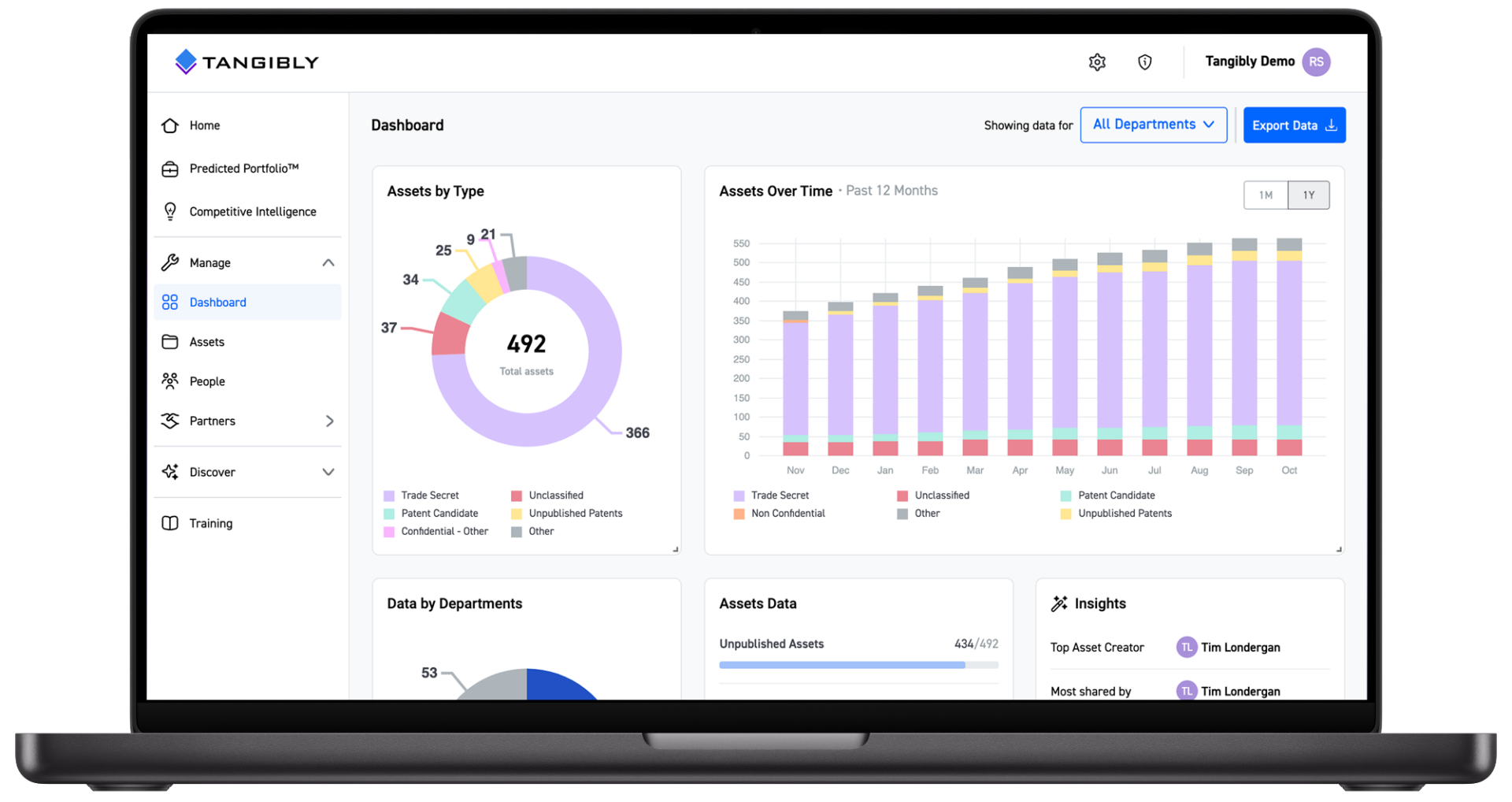“All of our trade secrets are covered by our standard form of NDA, isn’t that good enough?” This is a question we hear weekly, sometimes daily, from in-house and outside counsel alike. The answer is an emphatic “No.”
Gone are the days when one could argue that a broad body of distributed institutional know-how was a trade secret. With passage of the Defend Trade Secrets Act in 2016, trade secret disputes are now percolating up for appellate review and courts are actively establishing more precise legal standards governing when an alleged misappropriation can be enjoined or otherwise remedied. As a consequence, courts are making clear that relying on an NDA that generically recites that its confidentiality obligations extend to trade secrets, or broad generic description of alleged trade secrets, is not sufficient to move a court to stop a defendant’s actions.
So … if your trade secrets are not identified and memorialized prior to an alleged misappropriation, you may suffer the same unfortunate fate as the trade secret owner in some recent cases which we find interesting:
Mallet & Co. v. Lacayo
Trade secrets must be specifically identified
In Mallet, a trade secret owner alleged that ex-employees took trade secrets and used them while working for a competitor. The Plaintiff sought to stop the ex-employees and their new employer from competing with it and identified the allegedly misappropriated trade secret as “the overall body of knowledge that connects … the development, production, application and implementation” of their product when used in conjunction with proprietary equipment. The District Court found that “at least some of the Mallet information in question, possessed by Defendants, satisfies the trade secret definition(s)” including, “highly sensitive details about how Mallet produces, markets and sells” its product. The District Court further found that the Defendants had, indeed, misappropriated the Plaintiff’s trade secrets and granted the requested injunction.
On appeal, the Appellate Court vacated the District Court’s injunction stating “while the Defendant’s conduct appears deceitful, it will not support preliminary injunctive relief on a misappropriation claim under the DTSA unless the supposed trade secrets are adequately identified.” The Appellate Court also noted “It is the trade secret owner that bears the burden of demonstrating its claimed secrets are protectable and are not general industry knowledge. Just how much specificity a court should require of the plaintiff-owner is again a context specific matter. We cannot provide a bright-line rule. The best we can do is say that Mallets very general description of categories does not “sufficiently identify the information it claims as a trade secret…””
In other words, documentation identifying certain assets as trade secrets and that the owner has treated them as such is required for a court to stop an alleged misappropriation. The fact that “trade secrets” are included within the broad confidentiality obligations of an NDA is not sufficient to prevail in a case of an alleged misappropriation.
irth Solutions v. Apex Data Solutions
Software must be well identified and described, including how it “works,” to be given trade secret protection
Competitors irth Solutions and Apex Data Solutions both offer web-based software solutions that help protect underground assets from being damaged during excavation projects. The dispute arose when three of irth’s former customers provided login credentials to Apex’s owner, ostensibly to permit him to retrieve their data for migration to Apex’s platform. When irth reviewed the activity of its former customers on its web site, it discovered that Apex’s owner had logged into irth’s web site multiple times, ultimately copy 550 of its files. Subsequently, irth noticed that Apex began to offer features and modules similar to those offered to irth’s customers and filed suit to stop Apex from using the allegedly misappropriated trade secrets.
In its court filings, irth described its trade secrets as the “source code, system architecture and user interface … [and] individually or in combination, [its] system’s unique functionalities, graphical display and design, system architecture, various components and modules, logic flows, databases, access methods, supporting programs and systems, and related data and software schemas and models, methods and properties, and any scripts developed in conjunction with software customizations.”
While the court noted that “the overall design of a software program may be protectable as a trade secret, even if the individual components of that program are common knowledge in the programming industry,” it found that irth did not describe its software trade secrets “with sufficient specificity” to issue an injunction and quoted the Court of Appeals for the Second Circuit that “vague and indefinite” information cannot be protected as a trade secret. The court went on to state that “While it is not necessary to disclose every detail of an alleged trade secret in a complaint, [irth] could have explained that its software relies on a specific, proprietary algorithm developed at a certain time and which no one else owns” or it “could have filed a [more detailed] description of the alleged trade secrets under seal.”
In other words, in order for a software program to be protectable as a trade secret, in addition to the typical restrictions on copying and reverse engineering contained in an NDA or license agreement, the owner of the software program must provide a court information showing, at a minimum, how its software program works as a whole, the way in which the program features are interrelated, and the method of making the program work.
ZABIT, et al. v. BRANDOMETRY, LLC, et al.
Disclosing information without confidentiality agreements prevents claiming it is a trade secret under the DTSA
Zabit developed a stock index using brand data and stock prices to identify undervalued financial assets. The “proprietary algorithm” powering the stock index calculated the “spread between a company’s brand value and its stock price to identify stocks with unrealized value.” While commercializing the stock index, Zabit met with Defendants several times to negotiate an investment in Zabit. The terms of the investment were agreed and Zabit and the Defendants entered into a series of agreements, one of which required Zabit to satisfy certain capital calls made by Defendants or suffer ownership dilution and one of which gave some of the Defendants an “exclusive, perpetual, royalty-free license to use the [index] to develop financial products.” Unfortunately for the Plaintiffs, the license agreement did not include any confidentiality obligations or other restrictions limiting disclosure of information relating to the index or the underlying algorithm.
Shortly thereafter, Defendants issued a capital call which, of course, Zabit was unable to pay. As a consequence, Zabit’s ownership in the Plaintiffs was diluted and he lost control of his operating entities to the Defendants. Defendants thereafter canceled the license agreement and withdrew the Zabit stock index from the exchange on which it was traded and replaced it with a new one. Zabit claimed the new index was created with stolen intellectual property – the algorithms and formulas that powered the Zabit index – and filed a complaint alleging misappropriation under the DTSA.
Plaintiffs defined their trade secrets as the “algorithms, proprietary formulas, patterns, methodology, technical information, processes, programs, codes and compilation of information used to develop, and which continue to underlie, both the [Zabit] Index and [Zabit] ETF.” While the court acknowledged that Plaintiffs’ definition of their trade secrets was broad, it concluded that the definition provided sufficient notice of the purported secret at issue in that Plaintiffs were able to tie the broad categories of information to the specific algorithms(s) underlying the [Zabit] index.
Notwithstanding Plaintiffs’ assertion that they relied on a “web of non-disclosure and confidentiality agreements” to keep their information secret, the court concluded that such efforts were insufficient in light of the facts acknowledged by Plaintiffs. Those facts included Plaintiffs failure to include confidentiality and non-disclosure obligations in the license agreement executed with the Defendants, as well as Plaintiffs admissions and acknowledgements that several entities and individuals knew the details of the algorithm but were not subject to any confidentiality agreements or otherwise instructed to keep the information confidential. The court noted that when “an individual discloses his trade secret to others who are under no obligation to protect the confidentiality of the information, … his property right is extinguished.”
In other words, disclosure of a trade secret without an accompanying obligation to keep it secret, even if others are bound to do so, will not meet the “reasonable measures” standard.
Williamson v. Prime Sports Marketing, et al
Trade secrets must be specifically identified
NBA star Zion Williamson entered into a marketing agreement with Prime Sports when he was a freshman at Duke University. He sued Prime Sports seeking to void the marketing agreement on the grounds that it violated North Carolina’s Uniform Athlete Agent Act by failing to include a “conspicuous” warning to the student athlete that execution of the contract would result in a loss of intercollegiate eligibility.
In response, Prime Sports brought counterclaims against Williamson, including misappropriation of trade secrets in violation of North Carolina’s Trade Secrets Protection Act. Prime Sports alleged that their “strategic, comprehensive and extensive marketing plan for” Williamson, that “included numerous multimillion-dollar strategic branding and marketing endorsements, contracts and/or opportunities that Defendants had obtained” for Williamson constituted “proprietary” trade secrets. Prime Sports further alleged that their idea to brand Williamson as “the First Zion Williamson,” rather than “the Next LeBron,” and that a Brand Management Strategy document including a list of companies sorted by category, such as “Footwear & Apparel” and “Luxury” were trade secrets. The court quickly disposed of Prime Sports’ arguments, finding that the allegations were too vague to establish that any trade secrets existed and that the concept of the “First Zion Williamson” was both generally known and readily ascertainable, and therefore ineligible for trade secret protection. The court noted that such a branding plan was not new – LeBron James’s agent publicly stated his focus was to make James “the first LeBron James” and not the “second Michael Jordan.” The court also concluded that the Brand Management Strategy “does not appear to contain any information that could not be readily ascertained by watching the commercials during any televised NBA game” and therefore did not constitute a trade secret.
The Bottom Line
These four cases are a sampling of a clear trend – having a signed NDA is just the beginning of protecting your valuable trade secrets. Owners must be clear and specific on what their trade secrets are to improve their chance of success once a misappropriation occurs.

